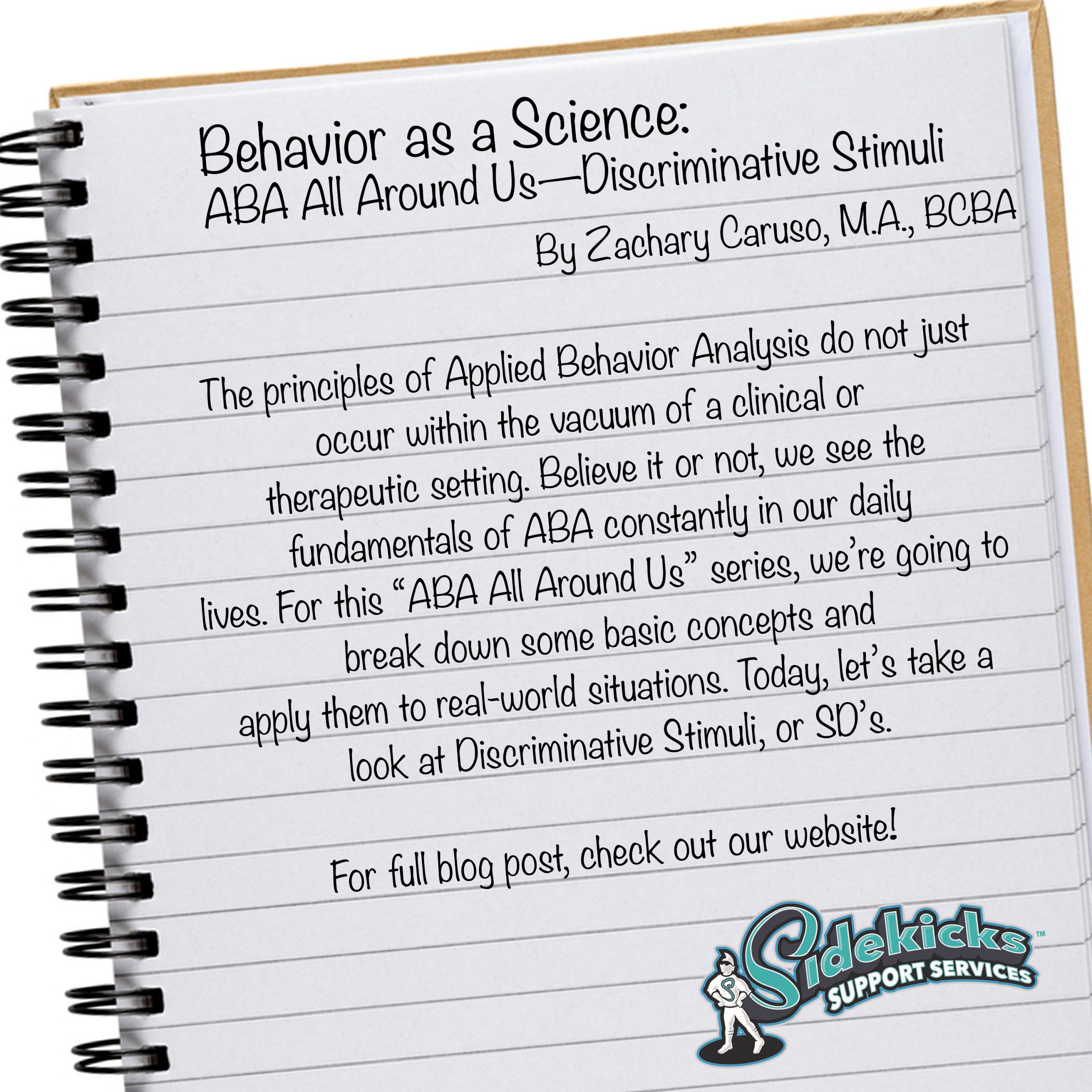The principles of Applied Behavior Analysis do not just occur within the vacuum of a clinical or
therapeutic setting. Believe it or not, we see the fundamentals of ABA constantly in our daily
lives.
For this “ABA All Around Us” series, we’re going to break down some basic concepts and
apply them to real-world situations. Today, let’s take a look at Discriminative Stimuli, or SD’s. An SD is any environmental stimulus that signals to an individual that reinforcement is available contingent upon the occurrence of a specific behavioral response. Due to the relationship that an SD has with reinforcement, it serves as a prompt or a “trigger” which elicits a specific response in order for the individual to access the available reinforcer.
Now, when would we see this concept applied in the real world? Let’s say you’re out in public and you start to get hungry. You come across a vending machine and decide to put money into it in order to obtain a snack. The sight of the vending machine serves as an SD for you because it lets you know that reinforcement in the form of food is available, contingent upon your behavior of putting money into the vending machine. Without having the SD of seeing the vending machine, you would not be signaled to the availability of food and would therefore have no reason to engage in the behavior of spending money.
When you put the entire behavioral sequence together, you have what is referred to as a Three-Term Contingency. The first part of the contingency is the SD (seeing the vending machine). The second part is the response (putting money into the vending machine). The third part is accessing reinforcement for your behavior (getting the snack).


0 Comments